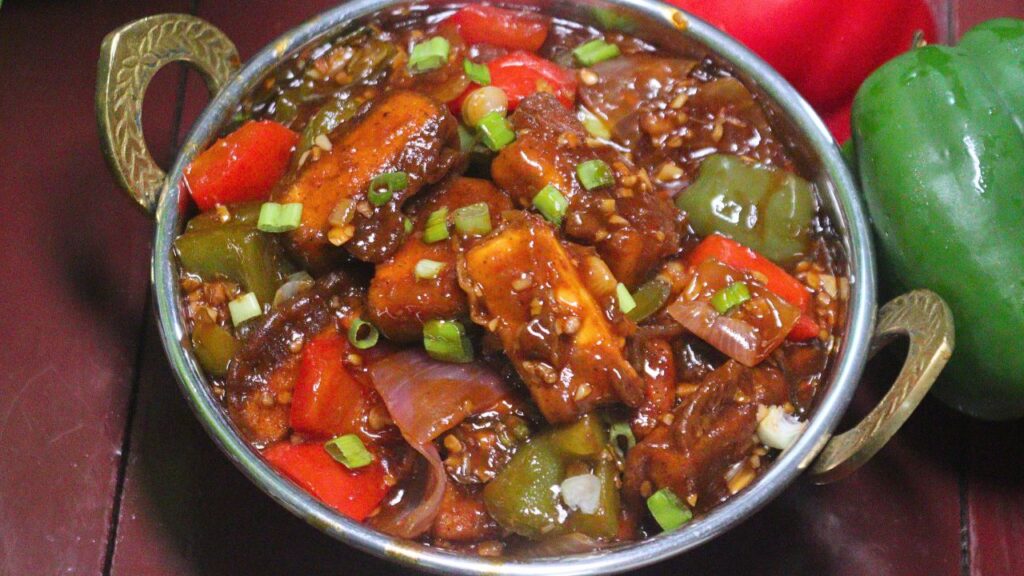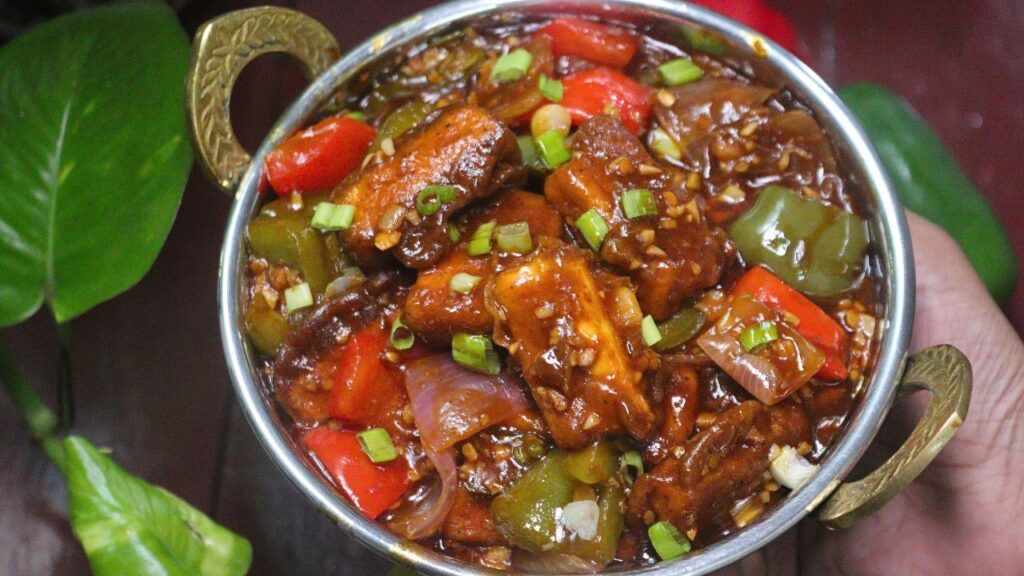



Paneer Manchurian is a popular Indo-Chinese recipe that combines the richness of paneer (Indian cottage cheese) with a bold, tangy, and mildly spicy Manchurian sauce. This dish stands out in the wide world of paneer recipes due to its unique blend of textures and flavors, making it a favorite in Indian and Asian-inspired restaurants. The paneer cubes are first coated in a spiced batter, fried until crispy, and then tossed in a savory, aromatic gravy. The result is a dish with a delightful contrast between the crispy paneer and the velvety gravy, giving it a distinct appeal. With origins in the fusion of Indian and Chinese cuisines, this recipe has become an enduring comfort food, bridging the flavors of both culinary worlds.
The sauce in Paneer Manchurian is typically made by sautéing aromatic ingredients like ginger, garlic, and green chilies in oil, creating a base with intense flavors that pair beautifully with the creamy texture of paneer. Spices and sauces such as soy sauce, ketchup, and schezwan sauce are then added, followed by a light corn flour slurry to achieve the signature thickness in the gravy. As a result, this Paneer Manchurian recipe becomes the ideal balance of spicy, tangy, and umami flavors. The dish is perfect as a main course or side dish with options like fried rice or noodles, which makes it a highly versatile part of Indo-Chinese recipe collections.

Paneer Manchurian is celebrated for its flavor profile and unique fusion. The combination of spices, sauces, and fresh vegetables creates a depth of flavor that appeals to a wide audience. The texture is equally important; crispy fried paneer cubes combined with a thick, rich gravy allow for a delightful contrast. This dynamic quality is a hallmark of Indo-Chinese recipes, designed to bring out the best in both Indian and Chinese culinary techniques. The dish's versatility allows it to be served as a standalone entrée, appetizer, or paired with a variety of rice and noodle dishes, making it a staple for both weekday meals and special occasions.
Paneer is known for its high protein content, making it a beneficial ingredient for vegetarians looking to add protein to their diet. As part of a Manchurian recipe, paneer serves as a satisfying protein option that can be enjoyed by vegetarians and non-vegetarians alike. Additionally, paneer is a good source of calcium, which is essential for bone health. When combined with vegetables like bell peppers and spring onions in the Manchurian gravy, Paneer Manchurian offers a balanced meal packed with vitamins and minerals. Indo-Chinese cuisine has long embraced the idea of combining proteins with vegetables in tangy, spicy sauces, and Paneer Manchurian is a perfect representation of this approach.
Like many paneer recipes, this dish can be adapted to suit personal tastes. A few common variations include:
Paneer Manchurian is often served alongside popular Indo-Chinese dishes such as fried rice, Hakka noodles, or steamed rice. Its versatility also makes it a great accompaniment to simpler main dishes, as the Manchurian sauce adds complexity and spice. The dish is typically garnished with chopped spring onions, which not only add a pop of color but also a bit of crunch and freshness. It is served hot to ensure that the paneer retains its crispiness.
Indo-Chinese recipes like Paneer Manchurian have a long-standing presence in India, especially in urban areas. They reflect the blending of Indian flavors with Chinese cooking methods, creating a fusion that is both comforting and exciting for the palate. This cross-cultural cuisine began to grow in popularity during the 20th century in regions like Kolkata, where Chinese immigrants brought their culinary techniques, which were then adapted to suit local Indian tastes. Since then, dishes like Paneer Manchurian have become beloved staples in Indian homes and eateries, celebrated for their robust flavor and ability to bring a touch of restaurant-style indulgence into the home kitchen.
Achieving the best results with Paneer Manchurian requires attention to detail:
Paneer Manchurian can be adapted for a range of dietary needs. For a vegan version, tofu can be used as a substitute for paneer. Gluten-free alternatives to all-purpose flour, such as chickpea flour or a gluten-free blend, can be used in the batter without affecting the taste significantly. The dish can also be made with minimal oil by opting for air frying or baking the paneer instead of deep frying.

Paneer Manchurian stands as a versatile, delicious, and satisfying dish within the Indo-Chinese recipe collection. Whether enjoyed as a snack, main course, or side dish, it provides a burst of flavor and texture that is hard to resist. The dish exemplifies the creative blend of Indian and Chinese culinary traditions, combining elements from both to create something unique yet familiar. As more people embrace fusion foods, Paneer Manchurian continues to be a crowd-pleaser, appreciated for its richness, adaptability, and depth of flavor.